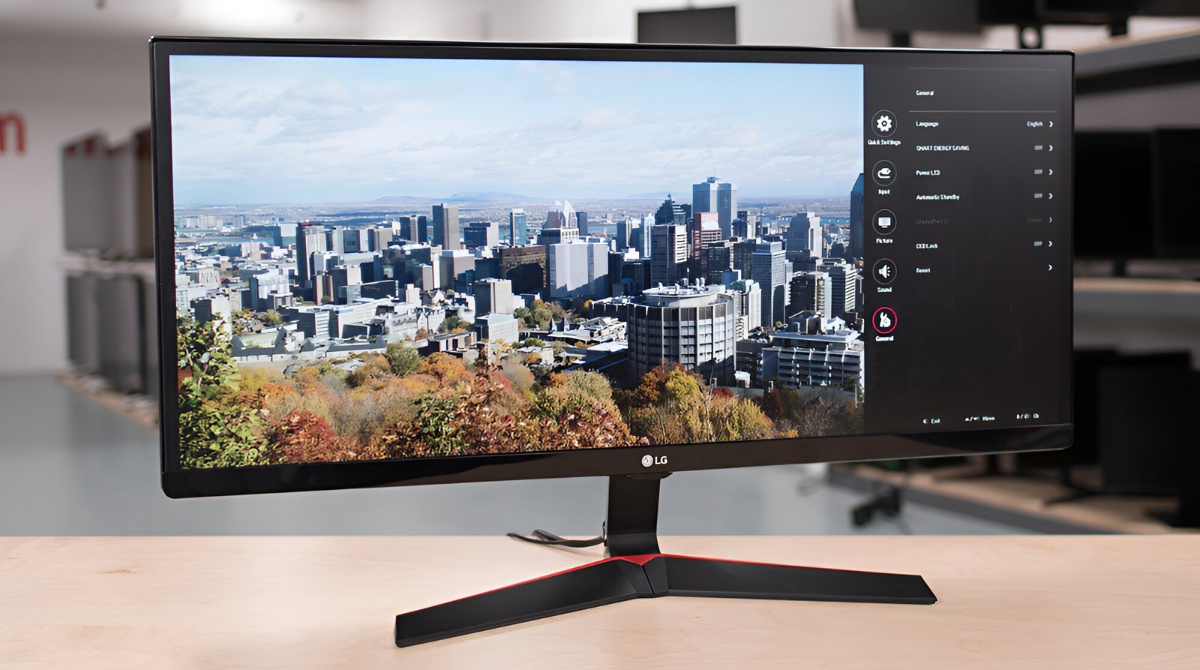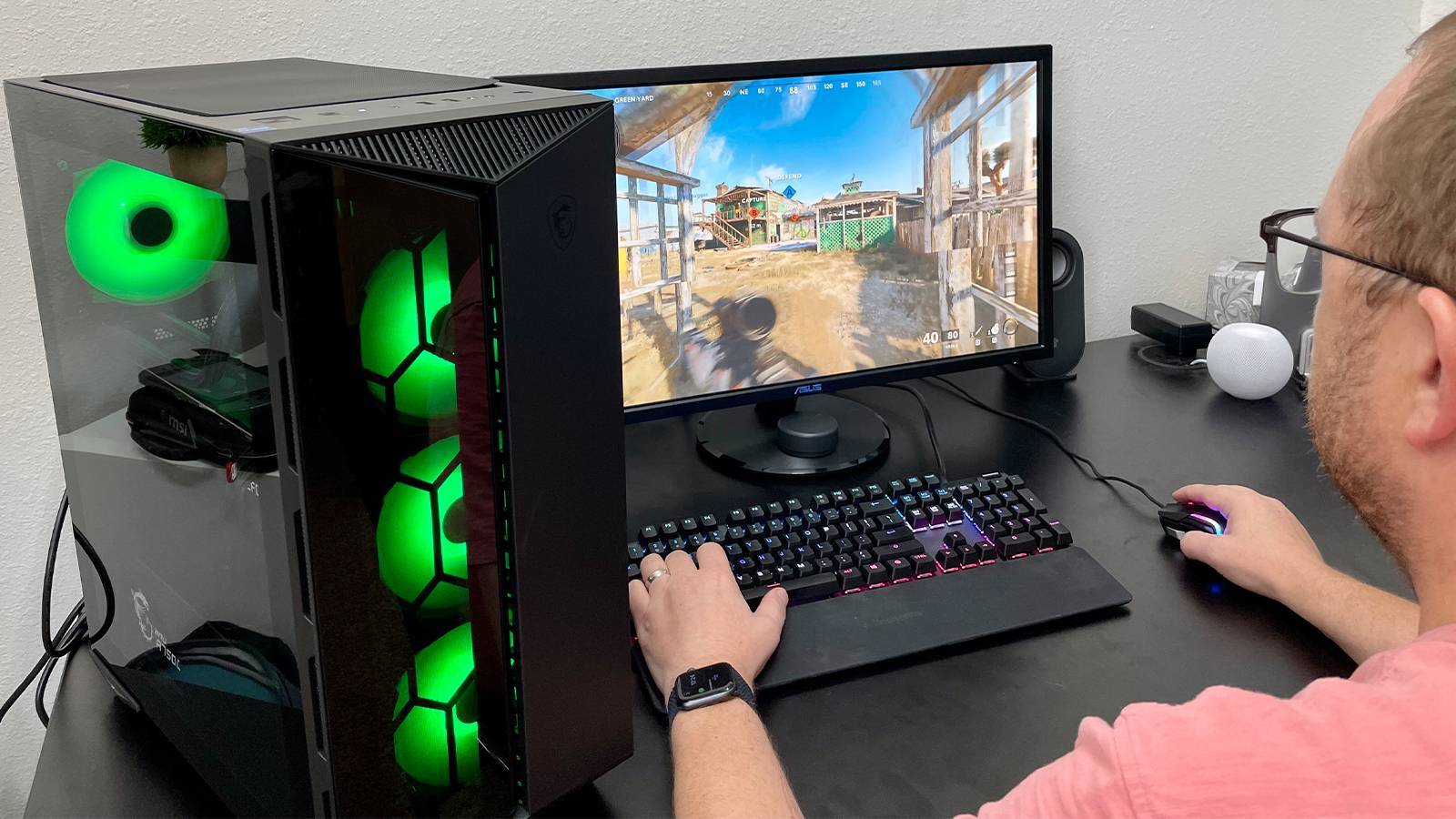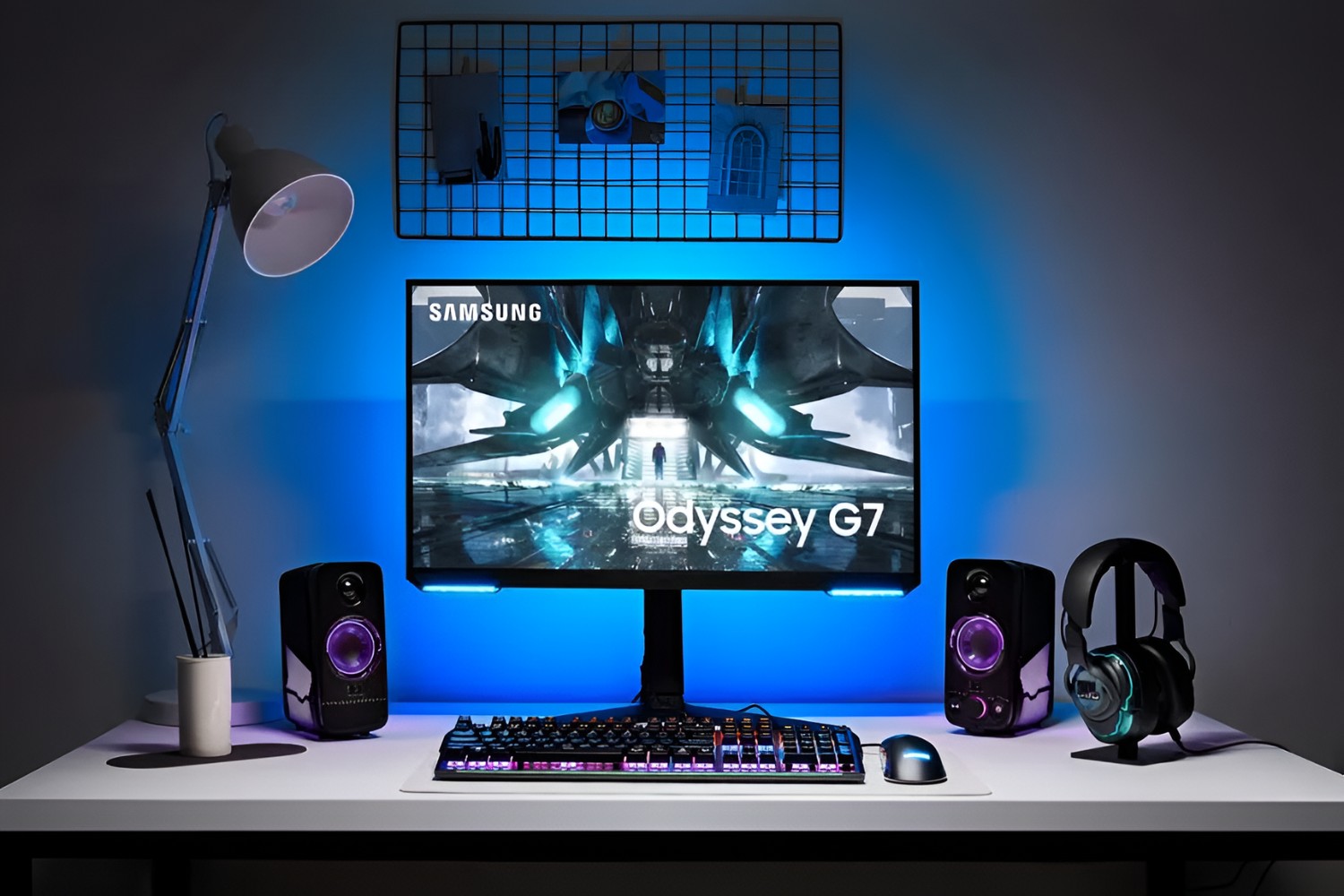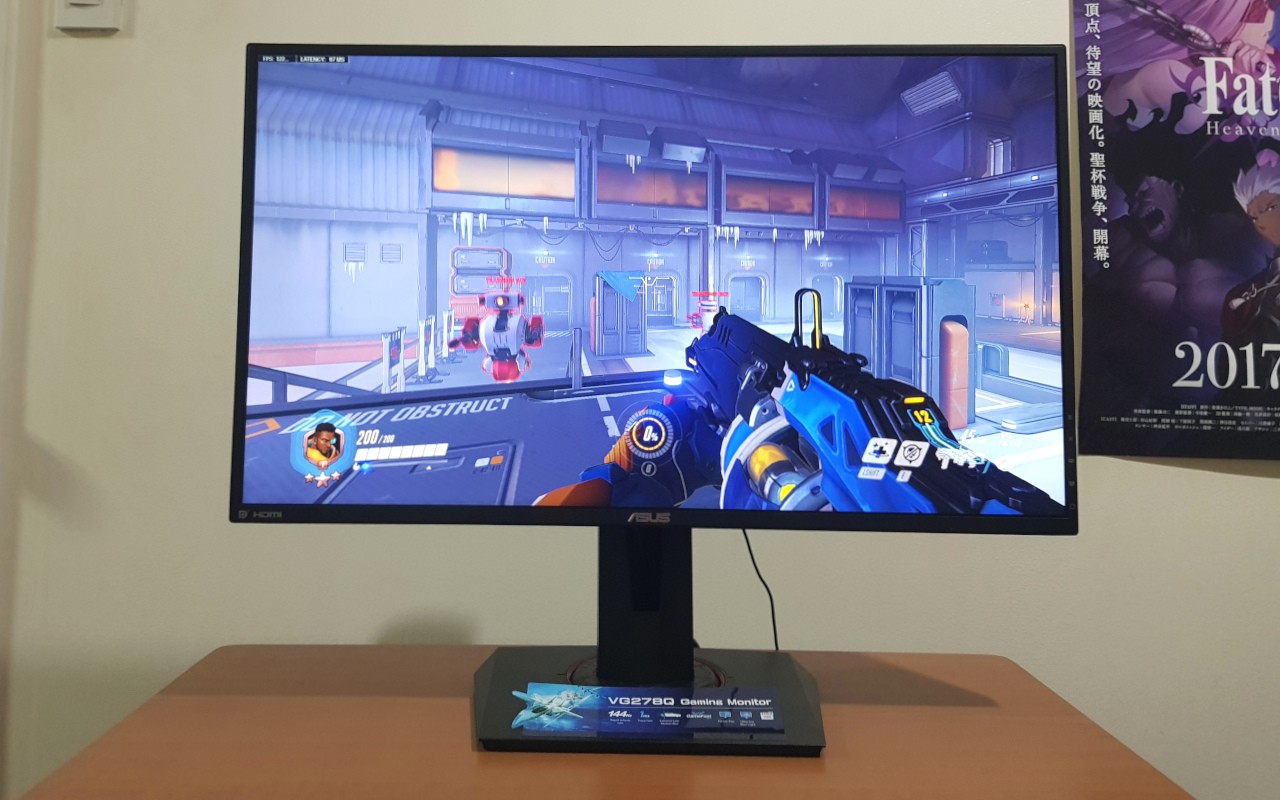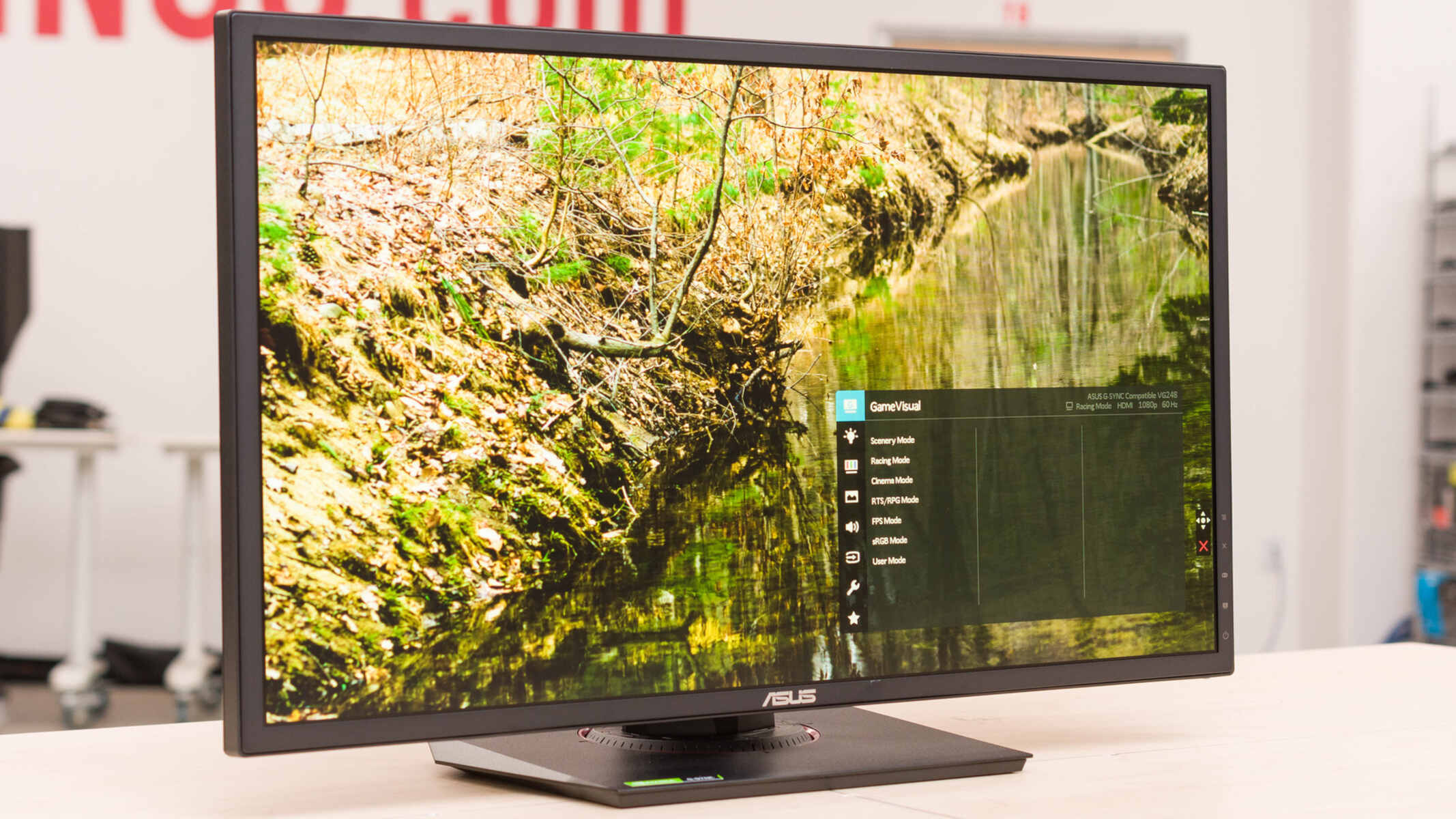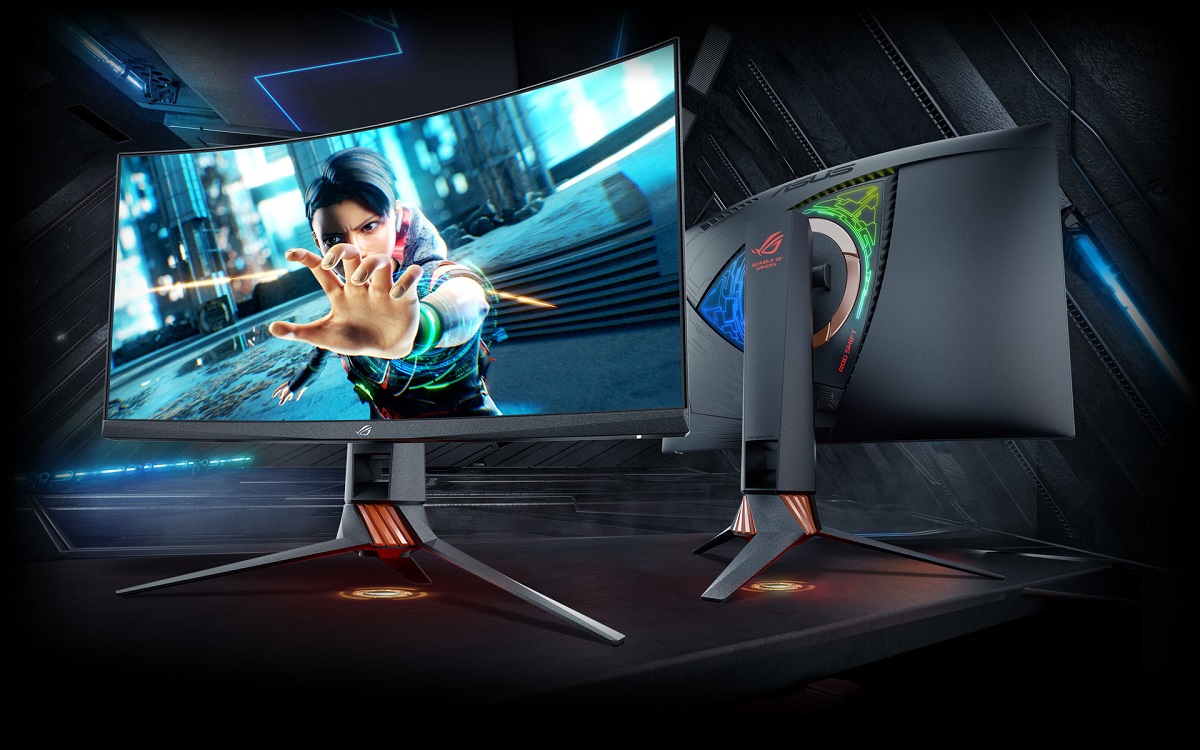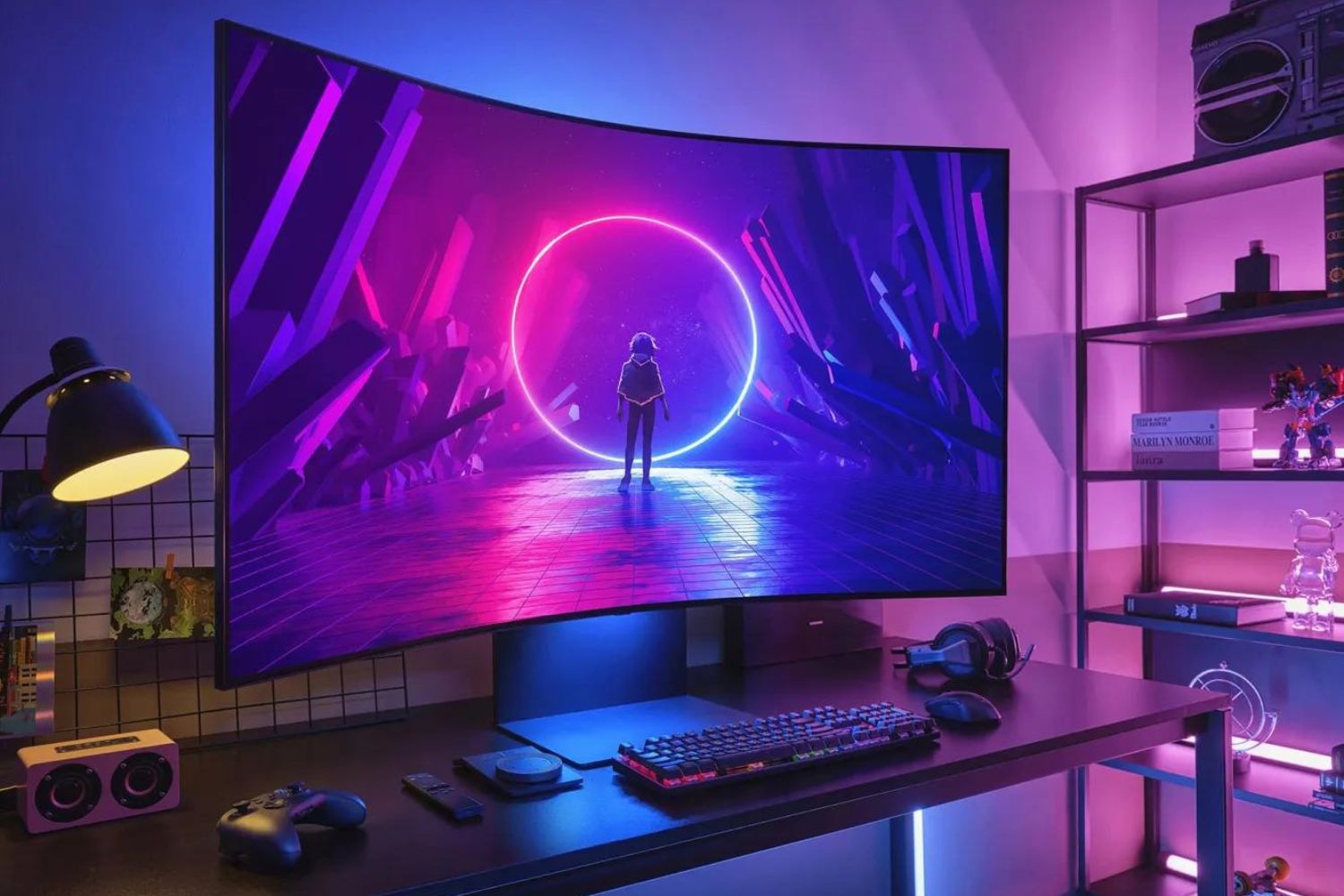Introduction
Welcome to the world of gaming, where every frame matters and every millisecond can make a difference. As a gaming enthusiast, you know that having the right equipment is crucial to maximize your gaming experience. One important aspect that can greatly impact your gameplay is the refresh rate of your gaming monitor.
The refresh rate, measured in hertz (Hz), refers to the number of times per second the monitor updates and displays a new image. A higher refresh rate means smoother motion, less motion blur, and a more responsive gaming experience. Traditionally, most monitors had a 60Hz refresh rate, which is sufficient for everyday tasks but may fall short in intense gaming situations.
That is why it is important to understand how to adjust the refresh rate on your gaming monitor. Whether you are a competitive gamer looking for every advantage or a casual gamer wanting to enhance your visual experience, adjusting the refresh rate can make a noticeable difference.
In this article, we will guide you through the process of adjusting the refresh rate on various platforms, including Windows, Mac, and gaming consoles. We will also discuss the reasons why you might want to adjust the refresh rate and provide tips for optimizing it for different types of games. So, let’s dive in and unlock the full potential of your gaming monitor by adjusting its refresh rate!
Understanding Refresh Rate
Before we delve into adjusting the refresh rate, let’s take a moment to understand what it actually is. The refresh rate of a monitor refers to how many times per second the image on the screen is refreshed or updated. It is measured in hertz (Hz).
A higher refresh rate means that the monitor updates the image more frequently, resulting in smoother motion and reduced motion blur. For example, a 60Hz refresh rate means the screen updates 60 times per second, while a 144Hz refresh rate means it updates 144 times per second.
Why is this important for gaming? Well, in fast-paced games where quick reactions and precision are crucial, a higher refresh rate can provide a significant advantage. It allows for smoother animations, more fluid gameplay, and reduces the input lag between your actions and what you see on the screen.
However, it’s important to note that not all games will benefit from a higher refresh rate. Some older or less demanding games may not require a refresh rate beyond 60Hz, while others, like competitive shooters or fast-paced action games, can greatly benefit from higher refresh rates.
It’s also worth mentioning that the effectiveness of a higher refresh rate is directly linked to the frame rate your graphics card can produce. To fully benefit from a 144Hz monitor, for example, your graphics card should be able to consistently render at least 144 frames per second (FPS). Otherwise, the extra refresh cycles will be wasted on duplicate frames, resulting in minimal improvements.
Understanding the concept of refresh rate is essential in optimizing your gaming experience. By adjusting the refresh rate according to the demands of your games, you can achieve smoother gameplay and improve your overall gaming performance.
Reasons to Adjust the Refresh Rate
Adjusting the refresh rate of your gaming monitor can offer several benefits, enhancing your gaming experience in various ways. Here are some of the reasons why you might consider adjusting your monitor’s refresh rate:
- Improved Visual Fluidity: A higher refresh rate, such as 144Hz or 240Hz, can provide much smoother visuals compared to the standard 60Hz. This increased fluidity makes fast-paced games feel more responsive and immersive.
- Reduced Motion Blur: Higher refresh rates can significantly reduce motion blur in fast-moving scenes. This minimizes the blurring effect caused by rapid movements, allowing you to track objects and characters more accurately.
- Enhanced Responsiveness: A higher refresh rate translates to lower input lag, which means your actions are displayed more quickly on the screen. This improved responsiveness can give you a competitive edge in games that require precise timing and quick reactions.
- Smooth Gameplay: High refresh rates enable the monitor to display more frames per second, resulting in smoother gameplay. This smoothness not only enhances the visual experience but also improves your ability to track targets and navigate through the game world.
- Reduced Eye Strain: While not exclusive to gaming, a higher refresh rate can provide a more comfortable viewing experience by reducing eye strain and fatigue, especially during extended gaming sessions.
It’s important to note that adjusting the refresh rate may not always be necessary or beneficial. Some factors to consider before making any changes include the capabilities of your monitor, the demands of the game you’re playing, and the capabilities of your graphics card. Additionally, keep in mind that not all games are optimized for high refresh rates, so it’s worth researching individual games to determine their compatibility.
By adjusting the refresh rate to match your specific gaming needs, you can unlock the full potential of your gaming monitor and enjoy a smoother, more immersive gaming experience.
Checking the Current Refresh Rate
Before you make any adjustments to the refresh rate on your gaming monitor, it’s important to determine what the current refresh rate is set to. This will help you understand where you stand and whether any changes are necessary.
Here are the steps to check the current refresh rate on different platforms:
- Windows: Right-click anywhere on your desktop and select “Display settings” from the drop-down menu. Scroll down to the “Advanced display settings” and click on it. Under the “Display information” section, you will find the current refresh rate displayed.
- Mac: Click on the Apple menu in the top-left corner of the screen and select “System Preferences.” Choose “Displays” and click on the “Display” tab. The current refresh rate will be listed under the “Refresh Rate” section.
- Gaming Consoles: The process to check the refresh rate on gaming consoles may vary slightly depending on the specific console you are using. Usually, you can navigate to the display settings within the console’s menu and find the refresh rate information there.
It’s worth noting that some monitors may have a fixed refresh rate, meaning they cannot be adjusted. In such cases, the monitor’s default refresh rate will be displayed. However, if your monitor supports different refresh rates, you’ll have the flexibility to adjust it based on your preferences and requirements.
By checking the current refresh rate, you will have a clearer understanding of where you stand and whether any changes need to be made. This knowledge will form the basis of your next steps in optimizing your gaming experience.
Adjusting the Refresh Rate on Windows
Windows provides a straightforward method to adjust the refresh rate on your gaming monitor. Follow the steps below to make the necessary changes:
- Right-click anywhere on your desktop and select “Display settings” from the drop-down menu. This will open the display settings window.
- In the display settings window, scroll down and click on the “Advanced display settings” link.
- Under the “Advanced display settings” section, click on the “Display adapter properties” link.
- A new window will open. Navigate to the “Monitor” tab.
- In the “Monitor” tab, you will find a dropdown menu labeled “Screen refresh rate.” Click on the dropdown menu and select the desired refresh rate from the available options. If you’re unsure, start with a slightly higher refresh rate than your current one and see how it feels.
- Once you’ve selected the desired refresh rate, click on the “Apply” button to save the changes.
- Windows will display a dialog box asking if you want to keep the changes. If the new refresh rate works well for you, click on “Keep changes.” Otherwise, click on “Revert” to revert back to the previous refresh rate.
It’s important to note that the available refresh rates will depend on your monitor’s capabilities and the display drivers installed on your system. If the desired refresh rate is not available in the dropdown menu, it could indicate that your monitor or graphics card does not support it.
Remember, adjusting the refresh rate should be done cautiously. Settling for an excessively high refresh rate that your system cannot handle may result in visual artifacts, compatibility issues, or even damage to your hardware. Therefore, it is recommended to test different refresh rates and find the one that balances smooth gameplay with your system’s capabilities.
Once you have adjusted the refresh rate to your satisfaction, you can now enjoy a smoother and more responsive gaming experience on your Windows PC.
Adjusting the Refresh Rate on Mac
Adjusting the refresh rate on a Mac is a straightforward process. Follow the steps below to make the necessary changes:
- Click on the Apple menu in the top-left corner of the screen and select “System Preferences” from the drop-down menu.
- In the System Preferences window, choose “Displays.”
- Click on the “Display” tab.
- Here, you will find a dropdown menu labeled “Refresh Rate.” Click on the dropdown menu to see the available refresh rate options.
- Select the desired refresh rate from the available options. If you’re unsure, start with a slightly higher refresh rate than your current one and check if it suits your needs.
- Once you’ve selected the desired refresh rate, close the System Preferences window, and the changes will be applied automatically.
It’s important to note that the available refresh rates will depend on your monitor’s capabilities and the settings of your Mac. If the desired refresh rate is not available in the dropdown menu, it could indicate that your monitor or graphics card does not support it.
When adjusting the refresh rate, it’s essential to consider your Mac’s hardware capabilities. Setting a refresh rate that is too high for your system to handle may lead to performance issues or compatibility problems. Therefore, it’s always a good idea to test different refresh rates and find the one that provides a smooth gaming experience without straining your hardware.
By adjusting the refresh rate on your Mac, you can optimize your gaming experience and enjoy smoother motion and improved responsiveness in your favorite games.
Adjusting the Refresh Rate on Gaming Consoles
Adjusting the refresh rate on gaming consoles can vary depending on the specific console you are using. Here are the general steps you can follow to adjust the refresh rate:
- Access the settings menu on your gaming console. The location of the settings may vary, but it is typically found in the main menu or home screen.
- Look for the “Display” or “Video” settings. This is where you can find options related to your console’s display settings.
- Within the display settings, you may find an option to adjust the refresh rate. Select this option.
- Depending on your console, you may have a few refresh rate options to choose from. Select the desired refresh rate from the available options.
- Save the changes and exit the settings menu.
It’s important to note that not all gaming consoles support adjusting the refresh rate. Some consoles have a fixed refresh rate, while others may automatically adjust the refresh rate based on the connected display.
Additionally, the refresh rate options available on consoles may depend on the capabilities of your display. If your monitor or TV supports a higher refresh rate, you may have more options to choose from compared to a display with a lower maximum refresh rate.
When adjusting the refresh rate on gaming consoles, it’s crucial to consider the compatibility between your console, display, and games. Not all games may be optimized for higher refresh rates, and setting a refresh rate that is not supported by the game may result in compatibility issues or visual artifacts.
By adjusting the refresh rate on your gaming console, you can make the most of your gaming experience and enjoy smoother visuals and improved gameplay on your preferred gaming platform.
Optimizing Refresh Rate for Different Games
Optimizing the refresh rate for different games can greatly enhance your gaming experience. While some games may benefit from a higher refresh rate, others may not require it or may even have limitations. Here are some tips for optimizing the refresh rate based on different game types:
- Fast-paced action games, shooters, and racing games: These types of games often involve quick movements, fast-paced action, and the need for precise reactions. For such games, a higher refresh rate, such as 144Hz or 240Hz, can provide a smoother and more responsive experience. It helps reduce motion blur and improves your ability to track fast-moving targets.
- Strategy games and RPGs: These games typically involve slower-paced gameplay and emphasize strategic decision-making. While a higher refresh rate can still provide smoother visuals, it may not have as significant an impact as in fast-paced action games. However, if your graphics card and monitor support it, using a higher refresh rate can still enhance your overall gaming experience.
- Older or less demanding games: Some older games or less demanding titles may not benefit from a higher refresh rate beyond 60Hz. In such cases, sticking with the default refresh rate or adjusting it slightly may be sufficient. It’s always a good idea to check the game’s system requirements or forums to see if a higher refresh rate offers any noticeable improvements.
- Virtual Reality (VR) games: Virtual Reality gaming often requires a high level of immersion and responsiveness. To ensure a smooth and comfortable VR experience, it is recommended to use a gaming monitor or headset with a higher refresh rate, ideally 90Hz or above. This helps minimize motion sickness and provides a more realistic and immersive VR environment.
Remember that optimizing the refresh rate is a balancing act between smooth gameplay, hardware capabilities, and game compatibility. Ensure that your graphics card can consistently deliver the frame rate required for the chosen refresh rate. It’s also advisable to test different refresh rates and assess how they impact your gaming experience for each specific game.
By adjusting the refresh rate to match the requirements of different games, you can maximize the visual quality and responsiveness, providing an optimal gaming experience tailored to the specific game you’re playing.
FAQs about Refresh Rate Adjustment
Adjusting the refresh rate of your gaming monitor can raise some questions. To help clarify any doubts you may have, here are some frequently asked questions about refresh rate adjustment:
- 1. Does a higher refresh rate automatically improve gaming performance?
- No, a higher refresh rate alone does not directly improve gaming performance. It enhances the visual experience by providing smoother motion and reduced motion blur. To fully benefit from a higher refresh rate, your graphics card should be capable of delivering a consistent frame rate equal to or higher than the chosen refresh rate.
- 2. Are higher refresh rates always better?
- Higher refresh rates can enhance your gaming experience, especially in fast-paced games. However, the benefits may not be as noticeable in slower-paced or less demanding games. Additionally, consider your system’s capabilities and the compatibility of the game with higher refresh rates.
- 3. Can I adjust the refresh rate on any monitor?
- Not all monitors support adjustable refresh rates. Some monitors have a fixed refresh rate, while others offer a limited range of options. If your monitor supports different refresh rates, you can adjust it within the available range.
- 4. How do I know the maximum refresh rate supported by my monitor?
- You can refer to the specifications of your monitor or consult the manufacturer’s website to find information about the supported refresh rates. Additionally, your monitor’s display settings may provide information about the available refresh rate options.
- 5. Can a higher refresh rate cause screen tearing?
- Screen tearing is a visual artifact that occurs when the monitor’s refresh rate and the graphics card’s frame rate are out of sync. This can happen at any refresh rate, but it becomes more noticeable when the frame rate fluctuates significantly. To avoid screen tearing, consider enabling vertical sync (VSync) or investing in a monitor with adaptive sync technology, such as G-Sync or FreeSync.
Remember, the answers to these FAQs serve as general guidelines, and individual results may vary. It’s always recommended to consult your monitor’s documentation or the game’s system requirements for more specific information.
By familiarizing yourself with these FAQs, you can gain a better understanding of the implications and considerations related to adjusting the refresh rate on your gaming monitor.
Conclusion
Adjusting the refresh rate of your gaming monitor can have a significant impact on your gaming experience. By understanding the concept of refresh rate and its implications, you can make informed decisions to optimize your gameplay.
Whether you’re a competitive gamer seeking a competitive edge or a casual gamer looking to enhance your visual experience, adjusting the refresh rate can provide smoother motion, reduced motion blur, and improved responsiveness.
Before making any changes, it’s important to check the current refresh rate of your monitor to gauge where you stand. From there, you can easily adjust the refresh rate on platforms such as Windows, Mac, and gaming consoles to meet your preferences and game requirements.
Different games may necessitate different refresh rates. While fast-paced action games benefit from higher refresh rates, games with slower gameplay may not require the same level of refresh rate. It’s essential to find a balance that matches your hardware capabilities and the demands of the game.
Lastly, it’s vital to understand the limitations of your monitor and graphics card. Choosing a refresh rate that exceeds your hardware’s capabilities may result in compatibility issues or reduced performance. Always test different refresh rates and assess their impact on your gaming experience.
By adjusting the refresh rate on your gaming monitor, you can unlock the full potential of your gaming experience, immersing yourself in smoother visuals, reduced motion blur, and more responsiveness. So, go ahead, optimize your refresh rate, and take your gaming to the next level!









